LSK
The LSK is the airforce of Laywenranian Military. In 2013 36'282 soldiers served in the airforce, which had a budget of 26,52 thousand million Dollar.
- Task
- Organisation
- Equipment
1. Task
The LSKs main duty is to protect the air room of Laywenrania from invading enemies and the support of the groundforces. The training of and with allied armies is also regarded as important. Due to the Isolation of the Laywenranian Islands, the Airforce plays an important part in the defense of Laywenrania by early detecting threats.
2. Organisation
Branches of service:
- Air Room Defense
- Ground Attack
- Transport
3. Equipment
Most of the planes are currently produced under license. Short time ago the military created a Weapon-Development Program. Goal is, to develope and produce own planes to be independent from supplies and weapons from other nations.
The uniforms and equipment of the soldiers doesn't differs from the equipment of the VVA
Air vehicles
- Geier UAV
- Fledermaus light UAV
Fighters
| Name | Picture | Description |
|---|---|---|
| JF-85 |
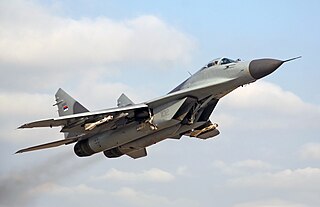
|
a twin-engine multirole fighter capable of performing a number of different operations, and are commonly outfitted to use a range of air-to-surface armaments and precision munitions, introduced 1985, modernised to JF-85V level during the last years (see below) |
| MZF-13 |

|
newest generation, single-seat, twin jet-engined fighter aircraft with swing wings, equipped with state-of-the-art radar and electronics, HMD and MFDs. Can be equipped with a variety of equipment from air-to-air-missiles to air-to-ground ammunition. |
| MZF-82 |

|
a heavy (MTOW: 28 t), twin engine (80 kN each with Afterburner) multirole plane, with two pilots, swing-wing configuration, capable of interdicting enemy fighters, bombers, sea and ground targets (moving and stationary); hardpoints: 4× light duty + 3× heavy duty under-fuselage and 4× swivelling under-wing pylon stations with a capacity of 9,000 kg of payload, the two inner wing pylons have shoulder launch rails for 2× Short-Range AAM (SRAAM) each, modernised with avionic and cockpit upgrades in 2004-2012 |
Bombers/Attack planes
| Name | Picture | Description |
|---|---|---|
| JBF-73 |

|
a twin-engine, subsonic, close support, ground attack and tactical reconnaissance aircraft with secondary capability as low level interceptor. Weapon load on 2'500 kg on 5 hardpoints: unguided bombs and rockets, guided rockets and IR-AAMs, modernised to JBF-73V in 2008-2013 (see below) |
| JBF-76 |
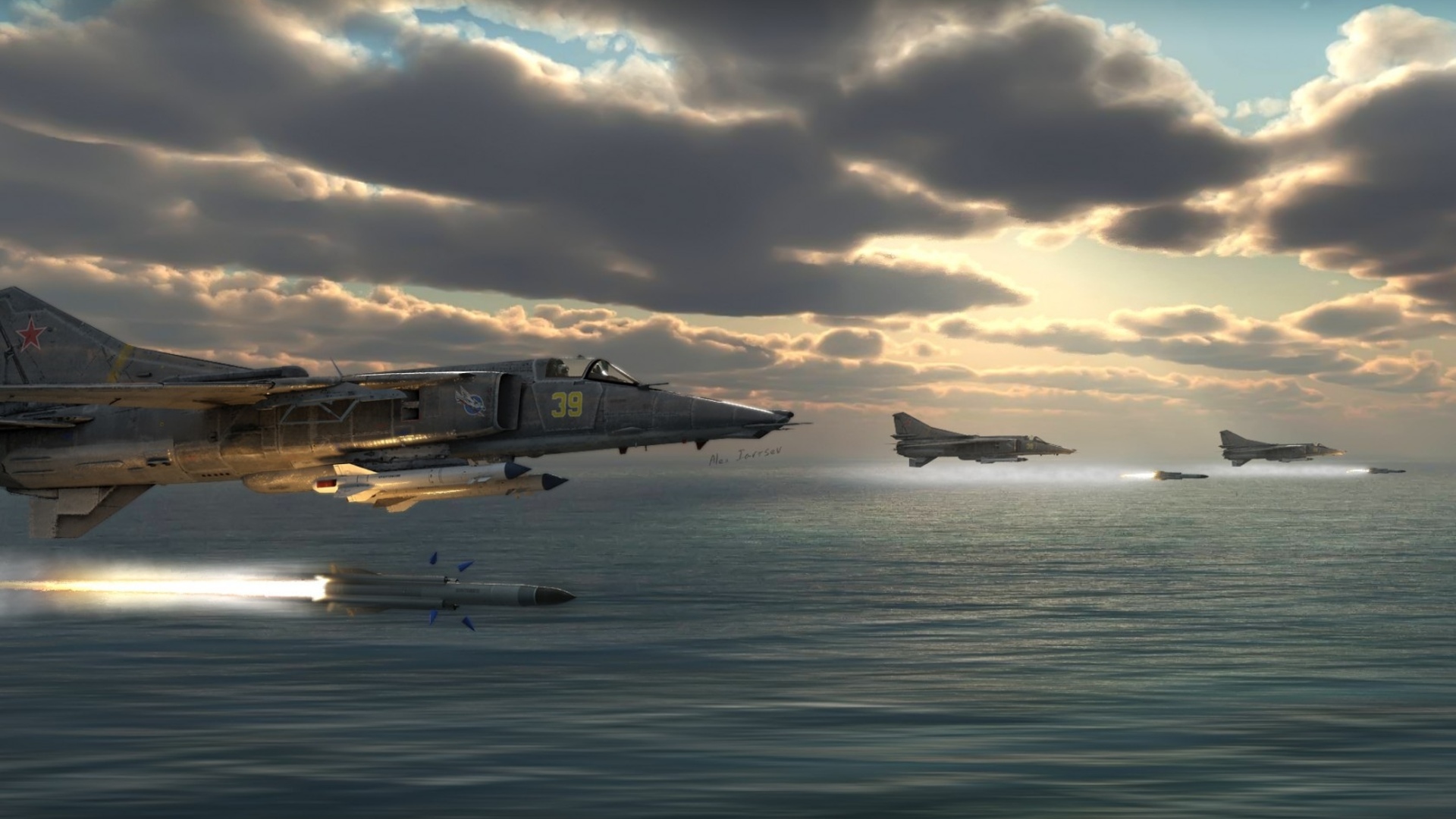
|
a variable-geometry ground-attack aircraft, equipped with a laser rangefinder and marked-target seeker. Equipped with sophisticated attack and navigation equipment, modernised to JBF-76V (see below) |
| BF-75 |

|
supersonic, all-weather attack aircraft/interdictor. The aircraft features a variable-sweep wing, twin-engines and a side-by-side seating arrangement for its two crew, modernised with modern weapons systems and avionics during 2001 - 2009 |
| BF-07 |

|
twin-seat, twin-engined strike fighter. It is designed primarily for tactical deployment against ground and naval targets (Tactical bombing/attack/interdiction roles, including against small and mobile targets) on solo and group missions in daytime and at night, under favourable and adverse weather conditions and in a hostile environment with counter-fire and EW counter-measures deployed, as well as for aerial reconnaissance. A special feature is it's comfortable crew compartment which ensures long patrol times. |
Utility planes
| Name | Picture | Description |
|---|---|---|
| Berijew A-50 Schmel |

|
Airborne early warning and control aircraft, introduced 1984 |
| Tu-95/Tu-142 |
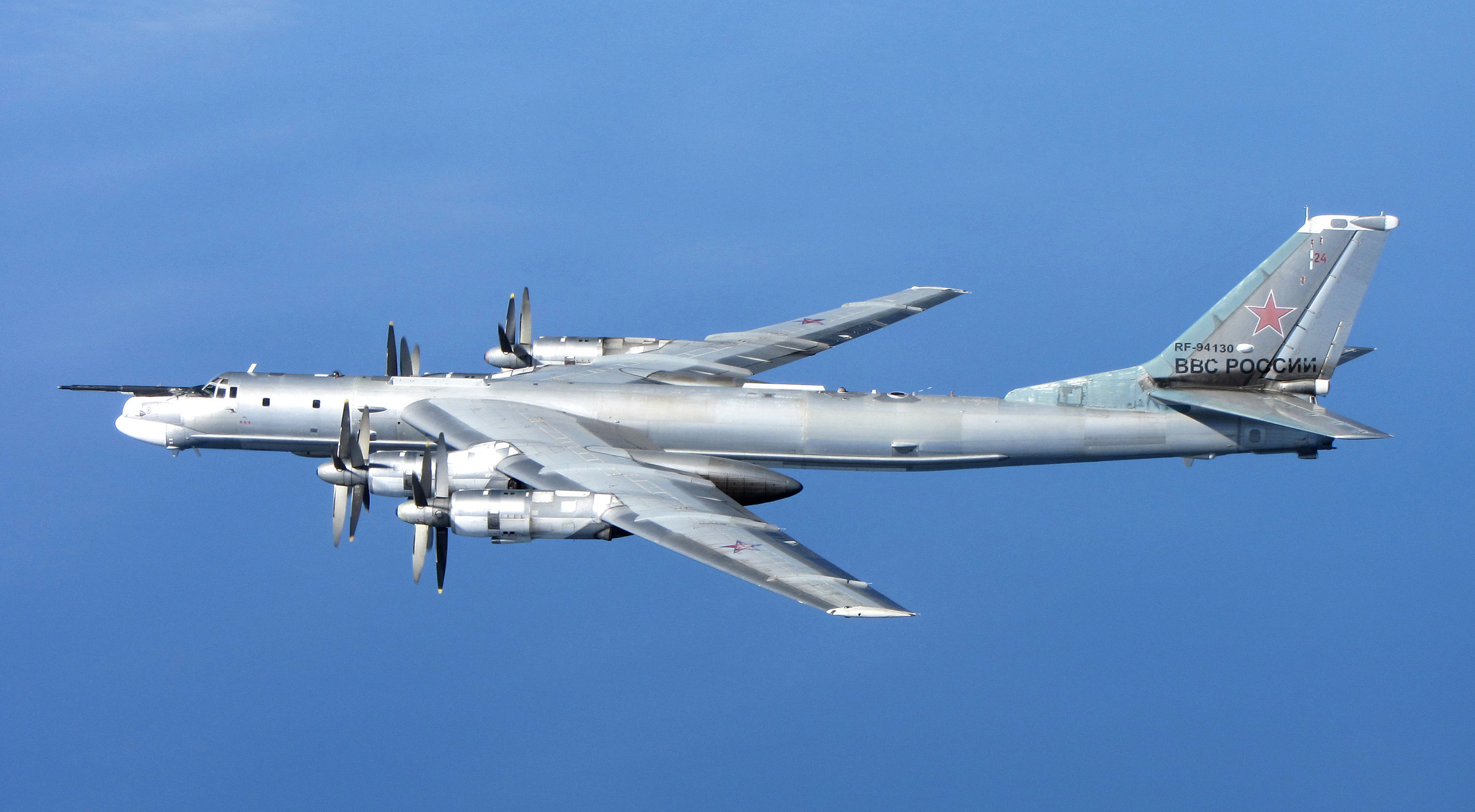
|
large, four-engine turboprop-powered strategic bomber and missile platform, mainly used as (maritime) recon/ASW plane, introduced 1956, still in service (although with many upgrades) |
| An-3 |

|
multipurpose, single-engine aircraft, turboprop variant of the An-2 |
| TF-222 |
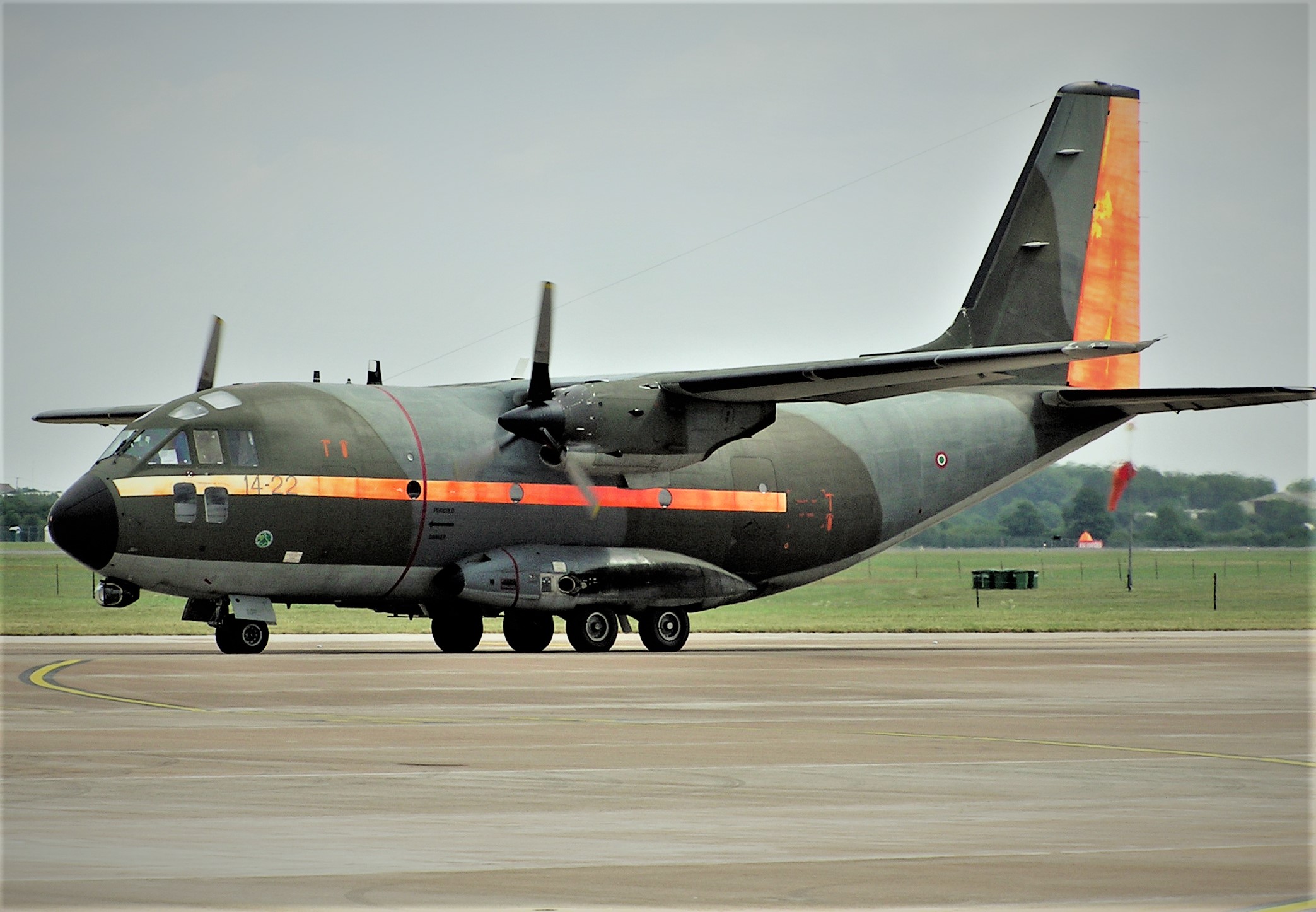
|
medium-sized STOL aircraft with a payload of 10 t, upgraded with more powerful and economic engines and new avionics |
| TF-26 |

|
twin-engined turboprop transport aircraft, in service 1970 - present; 5,5 t payload; modernised in 2012 with more modern and powerful engines and avionics |
| LET L-410 UVP |

|
twin-engine short-range transport aircraft, introduced 1972 - present; payload 1,5 t |
| TF-76 |
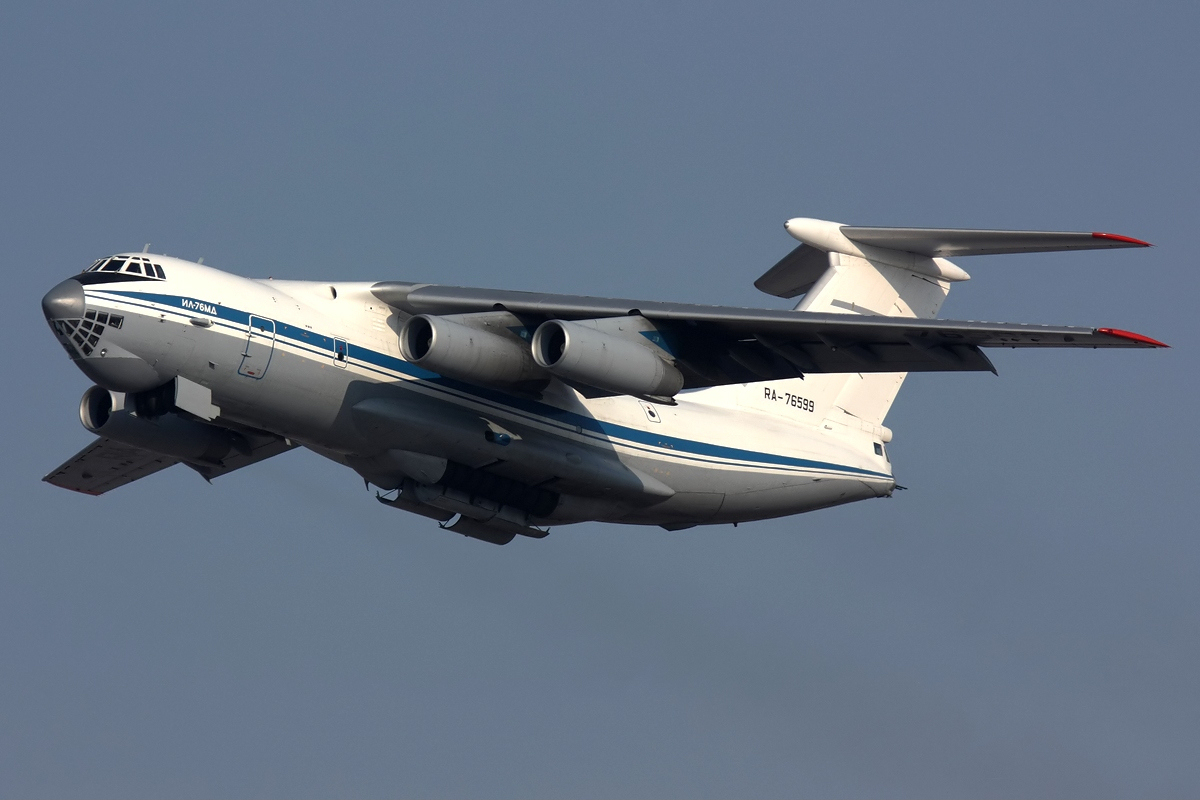
|
1976 - present; 44 t payload, modernised in 1998 - 2007 |
| IAR-99 |
|
advanced jet trainer and light attack aircraft capable of performing close air support and reconnaissance missions, introduced 1987; in 2013 new, more economic engines and more modern avionics and cockpit instruments were introduced (IAR-99B) |
| SF-03 |
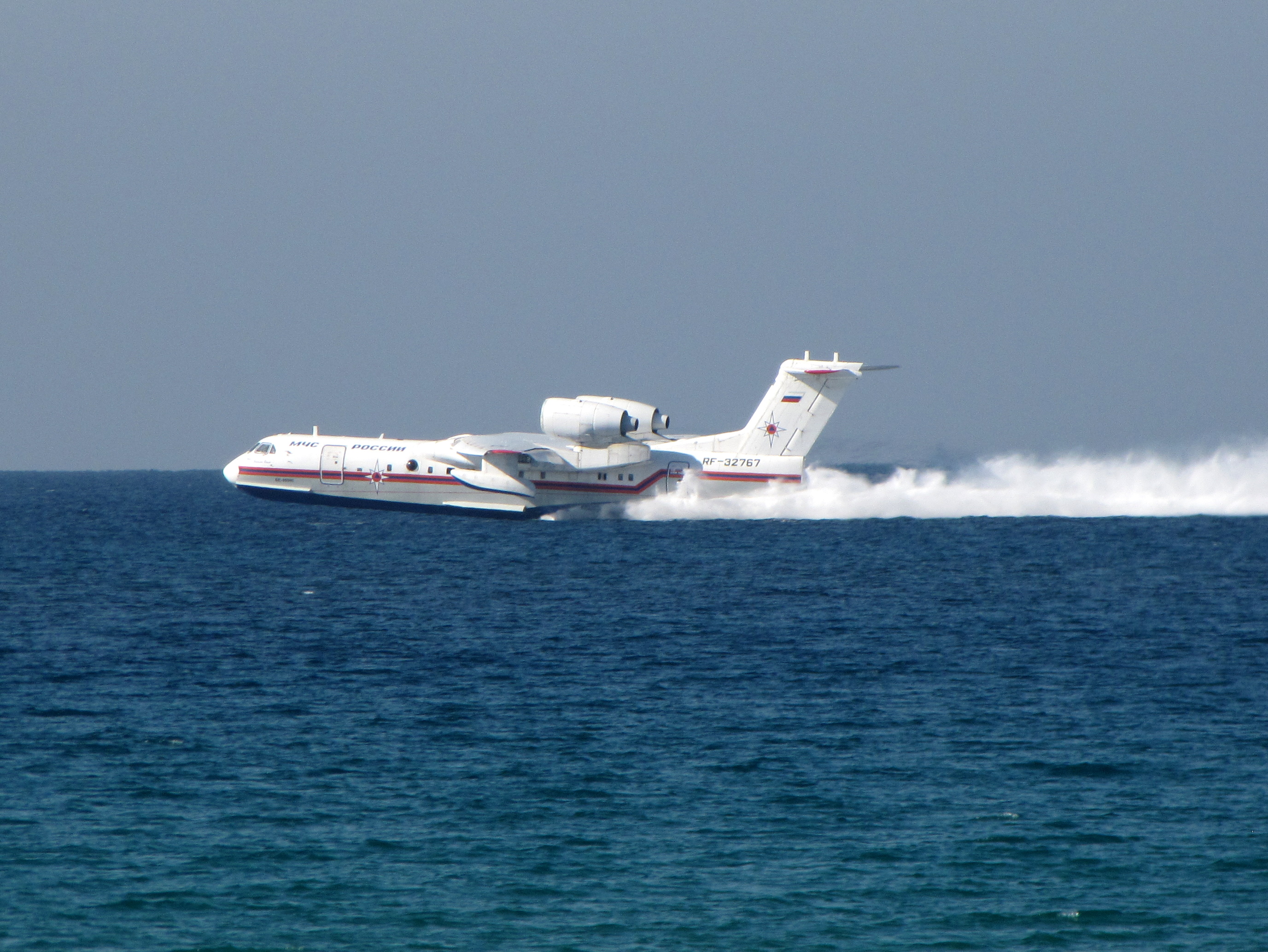
|
Multipurpose amphibious aircraft, used for SAR, maritime patrol and transportation missions. |
| SF-07 |

|
The SF-07 is a Laywenranian large STOL amphibious aircraft designed for air-sea rescue (SAR), maritime patrol and similar work. Compared to the SF-03 it has a higher range and shorter takeoff distance, while the SF-03 has a higher payload. |
| Il-112 |

|
light military transport aircraft developed by Ilyushin for air landing and airdrop of military air cargoes, equipment and personnel, currently in testing phase, intended to replace the L-410 |
| KC-390 |
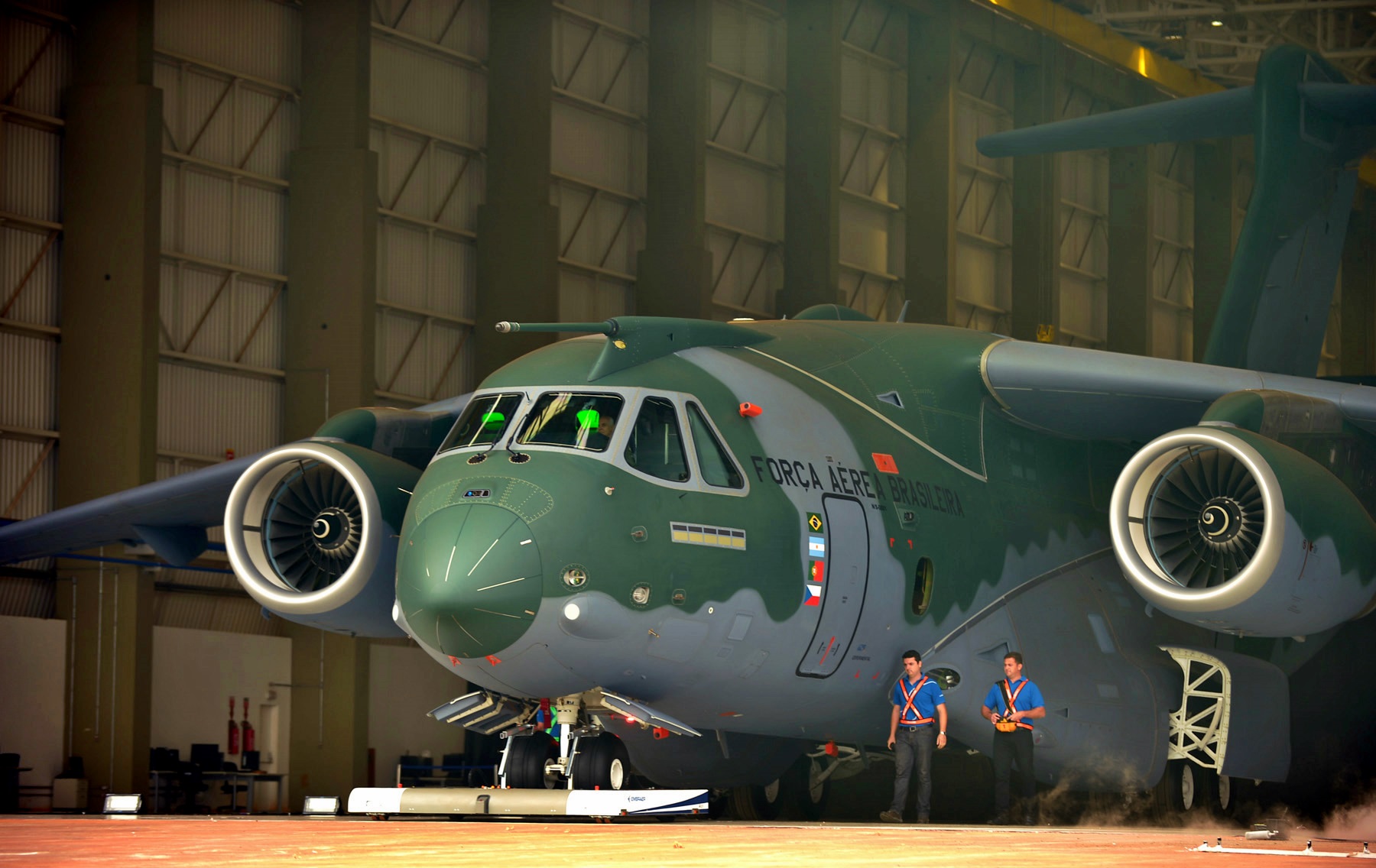
|
medium-size, twin-engine jet-powered military transport aircraft with a payload of 24 tons, currently under testing with three prototypes |
| P-1 |

|
currently tested by the LSK as replacement for the TU-95 in the anti-submarine/maritime patrol role. |
Helicopters
| Name | Picture | Description |
|---|---|---|
| THS-10 |
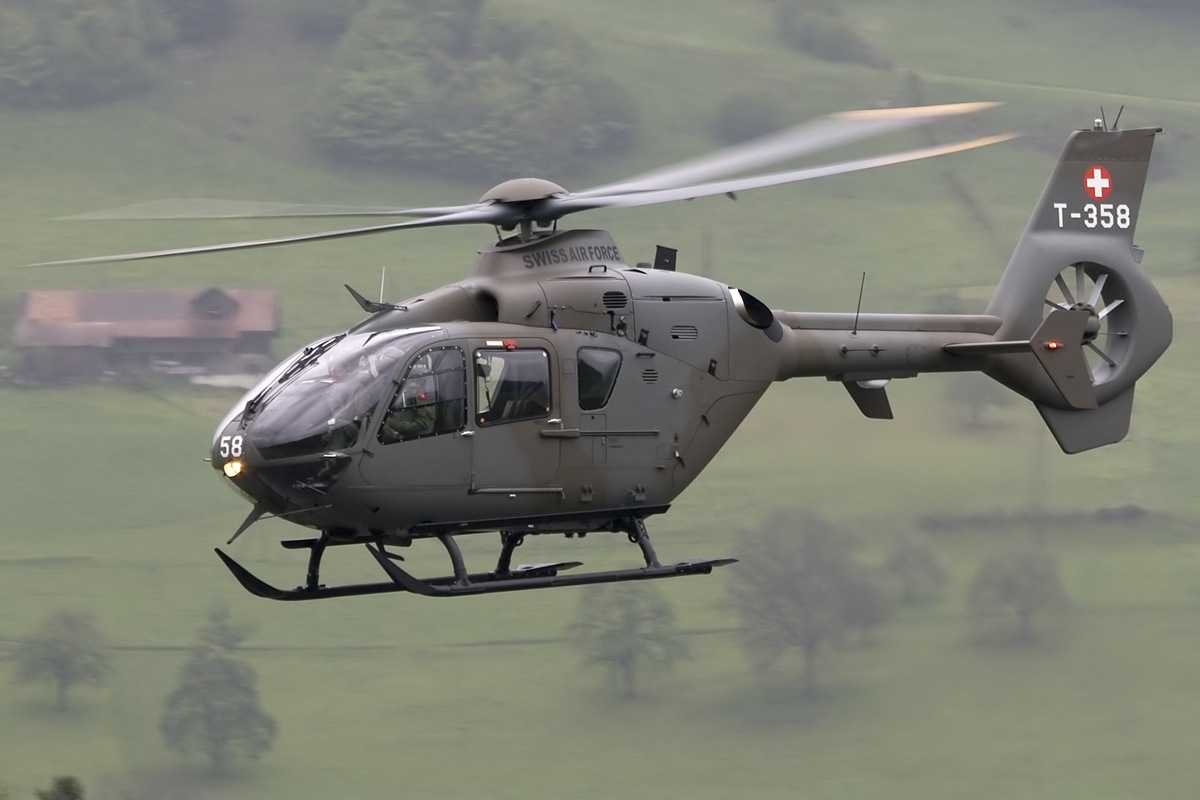
|
multi-purpose light helicopter |
| AHS-01 |

|
The AHS-01 is a military light scout helicopter built locally with license |
| THS-79 Westland Lynx |

|
multi-purpose military helicopter with both land and naval variants, 1979 - present |
| THS-05 |

|
long-range tactical transport helicopter, primarly used for SAR, ASW and other naval operations |
| THS-38 |

|
transport helicopter |
| KHS-28 |
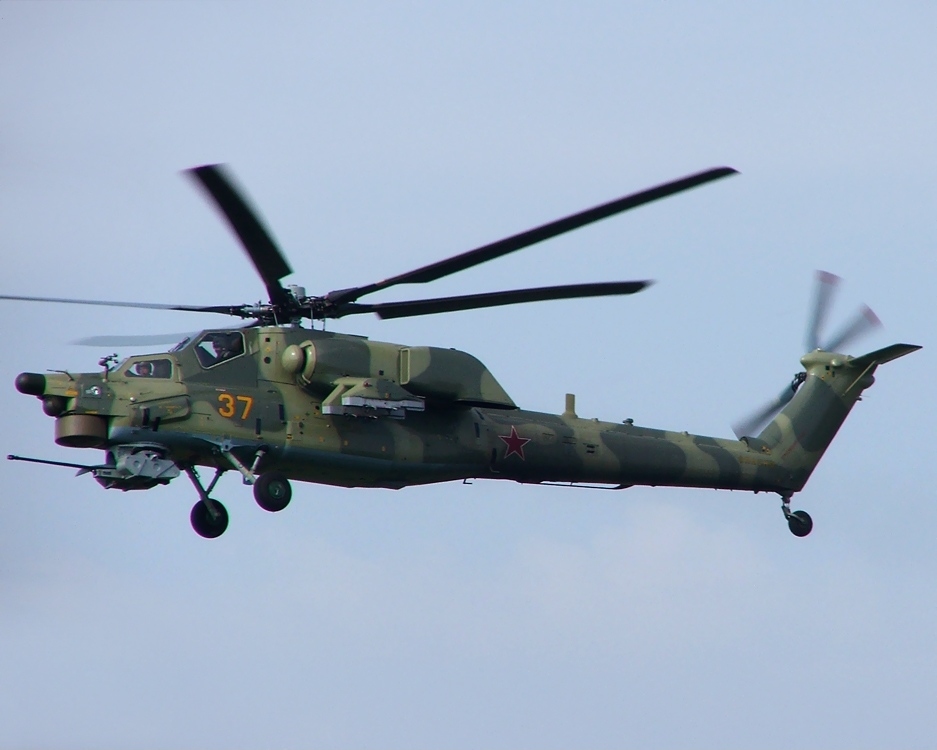
|
attack helicopter |
| THS-26 |

|
heavy transport helicopter |
WK-29
The WK-29 is an interceptor and air superiority fighter and a Laywenranian upgrade of the JF-85. It's designation in Laywenranian airforce service is JF-85V. The aircraft is built with an in-flight-refueling (IFR) probe and is able to carry three fuel drop tanks. These give the aircraft of single seat an operation range of 2,000 km with internal fuel, 3,200 km with three fuel drop tanks, and 6,000 km with three drop tanks and in-flight-refueling. The new engines are smokeless and contain improvements that reduce its infrared visibility. Thrust vectoring nozzles are built in. Dry weight is 1,045 kilograms. Incorporated is an infrared and optical signature visibility reduction systems. Service life has been increased to 4,000 hours.
The WK-29 has a mid-mounted swing wing with blended leading-edge root extensions (LERXs); there are swept tailplanes and two vertical fins, mounted on booms outboard of the engines. Automatic slats are mounted on the leading edges of the wings; they are five-segments. On the trailing edge, there are maneuvering flaps and wingtip ailerons. The wings are swept automatically by a computer into the best angle for the current flight situation without input from the pilot, but the pilot can manually control the wing sweep.
It is very agile, with excellent instantaneous and sustained turn performance, high-alpha capability, and a general resistance to spins. The airframe is stressed for up to 10-g maneuvers. The controls have "soft" limiters to prevent the pilot from exceeding g and alpha limits, the limiters can be disabled manually. The pilot sits in a Zvezda K-36DM zero-zero ejection seat which has had impressive performance in emergency. The general design and materials used have been overworked to give a better stealth ability.
Two monochrome liquid crystal (LCD) multi-function displays (MFD) have been introduced and new weapon controls have been incorporated in a HOTAS concept. A useful feature of the WK-29 is the S-31E2 KOLS, a combined laser rangefinder and IRST in an "eyeball" mount forward of the cockpit canopy.
Specifications
- Maximum takeoff weigth: 22,3 tonnes
- Empty weigth: 13,4 tonnes
- Length: 17,27 m
- Wingspan: 11,36 m
- Height: 4,72 m
- Powerplant: 2 x JA-33 afterburning turbofans, dry thrust 90 kN each, thrust with afterburner 150,13 kN each
- Maximum speed: Mach 2,35; Mach 1,25 on ground heigth
- Service ceiling: 18'000 m
- Rate of climb: 335 m/s
- Wing loading: 442 kg/m²
- Range: 2000 km (4500 km with three drop tanks)
- Combat radius: 1000 km
- Avionics: Phazotron Zhuk AE AESA radar, NII PP OLS-UEM Optical Location station
Armament:
- 1 x SMK-30-1 cannon with 150 rounds
- 8 under wing weapons hardpoints plus a centerline hardpoint for up to 5,000 kg of external fuel and ordnance
- Bombs: up to 500 kg, unguided, laser guided, TV guided. High Explosive, cluster, FAE
- Rockets: 57 mm to 250 mm rockets, unguided and laser guided
- Missiles, Air-to-Air: K-74M2, R-77
- Missiles, Air-to-Surface: X-31, X-29, K-29 (downscaled X-29 with a 150 kg warhead)
JBF-76
The JBF-76V is a vastly modernized domestic version of a veteran of the Laywenranian Air Forces. It is able to start and land on short field airports, fields a powerful weaponry for different missions, is built with an in-flight-refueling (IFR) probe and provides excellent visibility for the pilot. The single engine of the old model is replaced by the twin JA-33 used on the WK-29. The radar-cross-section is reduced through the use of different materials and slight adjustments of the shape of the frame.
The JBF-76V features variable-geometry wings which can be set to angles of 16, 45 and 72 degrees and is equipped with a heavy-duty landing gear to facilitate operation from poorer-quality airfields. The cockpit is armoured with 20 mm of Titanium and is equipped with an up-to-date cockpit with HOTAS, MFDs, HUD and HMD. It fields the strong "Lenka" EW-set (radar- and missilewarning, active ECM, chaff and flares, optronic jammer), the "Struppi" aiming system with TV camera and laser designator/rangefinder, IR receivers and the PRnK-25SM "Bars" navigation/attack suite built around the DKS-11 digital computer system. Coupled with the sophisticated "Tintin" radar (able to track air- and ground targets), this allows the plane to succesfully engage ground targets with guided and unguided munition with multiple different attack patterns (p.e. high-speed low-altitude insertion) and to intercept and engage enemy airplanes BVR or in dogfights with the nimble K-74. The rear area is covered by the "Timi" radar, which enables the pilot to fire the K-74 missiles at pursuing enemy planes without turning the JBF-76V. It is very agile, with excellent instantaneous and sustained turn performance, high-alpha capability, and a general resistance to spins. The airframe is stressed for up to 10-g maneuvers. The controls have "soft" limiters to prevent the pilot from exceeding g and alpha limits, the limiters can be disabled manually. The pilot sits in a Zvezda K-36DM zero-zero ejection seat which has had impressive performance in emergency.
A new KA1-1-01 Head-Up Display (HUD) was added. Other systems and components incorporated during the upgrade include a Multi-Function Display (MFD), RSBN-85 Short Range Aid to Navigation (SHORAN), ARK-35-1 Automatic Direction Finder (ADF), A-737-01 GPS/GLONASS Receiver, Karat-B-25 Flight Data Recorder (FDR), Berkut-1 Video Recording System (VRS), Banker-2 UHF/VHF communication radio, SO-96 Transponder and a L150 "Pastel" Radar Warning Receiver (RWR).
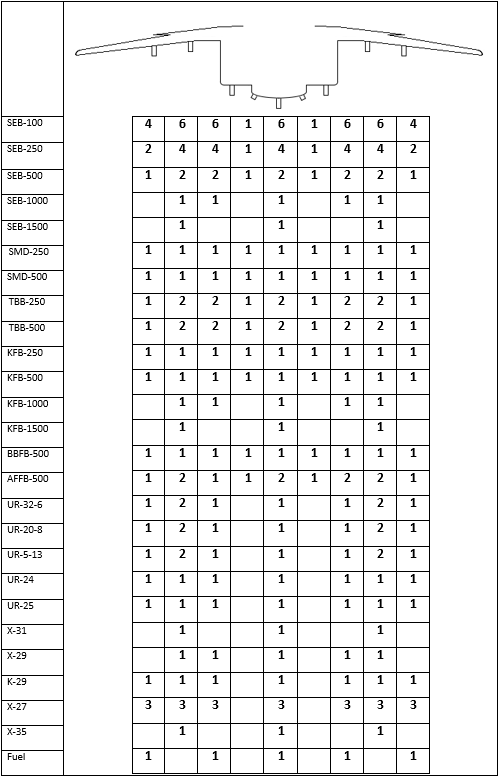
Specifications
- Maximum takeoff weigth: 21,9 tonnes
- Empty weigth: 12,9 tonnes
- Length: 17,97 m
- Wingspan: between 8,17 m (swept) and 14,52 m (spread)
- Height: 5,02 m
- Powerplant: 2 x JA-33 afterburning turbofans, dry thrust 90 kN each, thrust with afterburner 150,13 kN each
- Maximum speed: Mach 2,25; Mach 1,15 on ground heigth
- Service ceiling: 18'000 m
- Rate of climb: 335 m/s
- Range: 3000 km
- Ferry Range: >5000 km with three drop tanks
- Combat radius: ~1800km
- Avionics: "Tintin" and "Timi" radar, "Struppi" aiming system
Armament:
- 1 x SMK-30-2 cannon with 250 rounds
- Hardpoints: One centerline, four fuselage, two wing glove pylons and two swiveling pylons mounted on the wings with a capacity of 7,000 kg,
- Bombs: up to 1000 kg, unguided, laser guided, TV guided, inertia/GLONASS guided. High Explosive, cluster, FAE (40 x 100 kg, 26 x 250 kg, 14 x 500 kg, 5 x 1000 kg, 3 x 1500 kg)
- Rockets: Pods with: 32 x 57mm, 20 x 80mm, 5 x 130mm, 1 x 240mm, 1 x 250mm (unguided and laserguided)
- Missiles, Air-to-Air: up to 7x K-74M2, R-77
- Missiles, Air-to-Surface: up to 3 x X-31, 5 x X-29, 7 x K-29, 21 x X-27
- Reconnaisance-, EW-pods
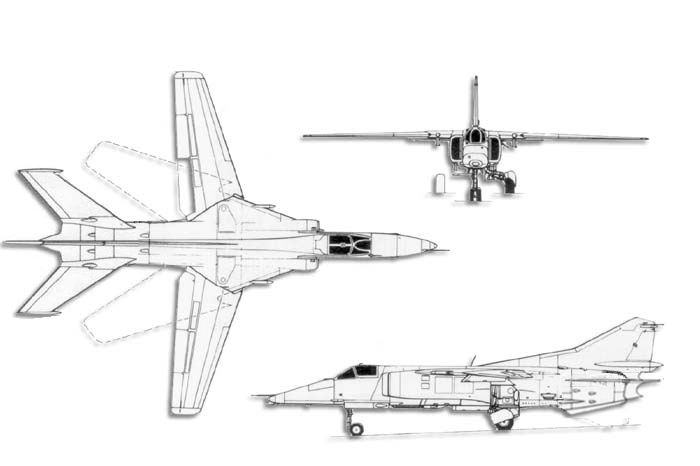 Created with blueprints from combataircraft.com
Created with blueprints from combataircraft.com
BF-75
The BF-75 is a supersonic, all-weather attack aircraft/interdictor developed in Laywenrania. It is a variable, sweep-winged, two engined side-by-side two seater.
The cockpit features HUD, MFDs, GLONASS, helmet mounted sights and K-36 zero-zero ejection seats. It is equipped with a dedicated Relief terrain clearance radar to provide automatic control of flights at low and extremely low altitudes, an Ortoma-15-01 onboard computer, and a designated attack suite (TV/laser system).
The BF-75 has a shoulder-mounted variable geometry wing outboard of a relatively small fixed wing glove, swept at 69°. The wing has four sweep settings: 16° for take-off and landing, 35° and 45° for cruise at different altitudes, and 69° for minimum aspect ratio and wing area in low-level dashes. The variable geometry wing provides excellent STOL performance, allowing a landing speed of 230 km/h, even lower than the Sukhoi Su-17 despite substantially greater take-off weight. Its high wing loading provides a stable low-level ride and minimal gust response.
The BF-75 has two JA-24 afterburning turbojet engines with 109,8 kN thrust each, fed with air from two rectangular side mounted intakes with splitter plates/boundary-layer diverters.
BF-75s have comprehensive radar warning, missile-launch warning, and active ECM equipment, with triangular antennas on the sides of the intakes and the tip of the vertical fin. The BF-75 has large wing fence/pylons on the wing glove portion with integral chaff/flare dispensers.
Specifications
- Crew: 2
- Maximum takeoff weigth: 45 tonnes
- Empty weigth: 22,1 tonnes
- Length: 23,97 m
- Wingspan: between 10,74 m (swept) and 17,52 m (spread)
- Height: 6,03 m
- Powerplant: 2 x JA-24 afterburning turbofans, dry thrust 110 kN each, thrust with afterburner 180,13 kN each
- Maximum speed: Mach 2,3; Mach 1,15 on ground heigth
- Service ceiling: 18'000 m
- Ferry Range: 8000 km with drop tanks
- Combat radius: 1200 km in a low-flying (lo-lo-lo) attack mission with 4,000 kg ordnance and external tanks
Armament:
- 1 x SMK-30-2 cannon with 250 rounds
- Hardpoints: twelve stations with a capacity of 12,000 kg,
- Bombs: up to 1500 kg, unguided, laser guided, TV guided, inertia/GLONASS guided. High Explosive, cluster, FAE (64 x 100 kg, 44 x 250 kg, 20 x 500 kg, 8 x 1000 kg, 5 x 1500 kg)
- Rockets: up to 11 Pods with: 32 x 60mm, 20 x 80mm, 5 x 130mm, 1 x 240mm, 1 x 250mm (unguided and laserguided)
- Missiles, Air-to-Air: 8 x K-74M2, 8 x R-77
- Missiles, Air-to-Surface: up to 5 x X-31, 5 x X-29, 7 x K-29, 23 x X-27, 3 x cruise missiles, 3 x X-35
- Reconaissance, ECM pods
Variants:
- BF-75VR: Dedicated tactical reconnaissance variant. BF-75VR retains much of the BF-75's navigation suite, including the terrain-following radar, but deletes the Orion-A attack radar, the laser/TV system, and the cannon in favor of two panoramic camera installations, 'Storch' TV camera, 'Gecko' side-looking airborne radar (SLAR), and 'Winter' infrared reconnaissance system. Other sensors are carried in pod form.
- BF-75VP: Dedicated electronic signals intelligence (ELINT) variant. The BF-75VP has additional antennas for intelligence-gathering sensors, omitting the laser/TV fairing, but retaining the cannon and provision for up to four missiles for self-defense.
TF-76
The TF-76 is a modified laywenranian version of the IL-76MF, designed to fit even better in the tasks of the Laywenranian Airforce for it. There are different versions in use.
Variants:
- TF-76T: transport version
- TF-76F: specialised paratrooper version
- TF-76A: air-to-air-refuel version
- TF-76K: gunship version.
TF-76K
The TF-76K shares many components with the other TF-76 versions, but features a specialised ground-radar for directing the guns and extended counter-measures.
Armament:
- 1 x 125 mm artillery cannon AGM-1, which fires thermobaric, high-explosive-fragmentantion and HEAT shells. 30 RPM with autoloader. 200 rounds carried
- 2 x 30 mm machine cannons (four barrels), 2000 rpm per barrel, 4000 rounds carried for each.
- 1 launch tube for precision guided munition. Carries 20 missiles.
JBF-73V
The JBF-73V is a singe-seat, twin-engine jet aircraft with fixed wings developed in the PRL.
In the nineties the JBF-73 showed it's age. Although the more sophisticated JBF-76 was constantly upgraded and proofed to be a very lethal and robust weapon, a more simple weapon system was still needed. It was choosen to thoroughly modernise the airplane. After multiple years of development, the JFB-73V was introduced to service in 2001. It is especially intended to be a low-cost alternative to the sophisticated JBF-76.
The plane is equipped with heavy-duty landing gear and armoured with 25 mm of Titanium. The cockpit is equipped with HOTAS, two MFDs, KA1-1-01 HUD, RSBN-85 SHORAN, ARK-35-1 ADF, A-373-01 GPS/GLONASS Receiver, Karat-B-25 Flight Data Recorder (FDR), Berkut-1 Video Recording System (VRS), Banker-2 UHF/VHF communication radio, SO-96 Transponder and a L150 "Pastel" Radar Warning Receiver (RWR). It includes a distinctive nose-mounted laser rangefinder. The system includes the weapons computer, radar and a weapons guidance systems, which combines all sensors.
The controls have "soft" limiters to prevent the pilot from exceeding g and alpha limits, the limiters can be disabled manually. The pilot sits in a Zvezda K-36DM zero-zero ejection seat which has had impressive performance in emergency.
Specifications
- Maximum takeoff weigth: 15,9 tonnes
- Empty weigth: 7,6 tonnes
- Length: 15,2 m
- Wingspan: 12,3 m
- Height: 4,6 m
- Powerplant: 2 x JA-23 afterburning turbofans, dry thrust 45 kN each, thrust with afterburner 53,13 kN each
- Maximum speed: 1'015 km/h
- Service ceiling: 14'000 m
- Rate of climb: 65 m/s
- Range: 2500 km, 750 kg with maximum weapon load and two drop tanks
Armament:
- 1 x SMK-30-2 cannon with 250 rounds
- up to 4'000 kg on 9 hard points
- Hardpoints: One centerline, six on the wings and two on the wing tips,
- Bombs: up to 1000 kg, unguided, laser guided, TV guided, inertia/GLONASS guided. High Explosive, cluster, FAE
- Rockets: Pods with: 32 x 57mm, 20 x 80mm, 5 x 130mm, 1 x 240mm, 1 x 250mm (unguided and laserguided)
- Missiles, Air-to-Air: K-74 (wing tips), R-77
- Missiles, Air-to-Surface: up to X-31, X-29, K-29, X-27
- Reconnaisance-, EW-pods
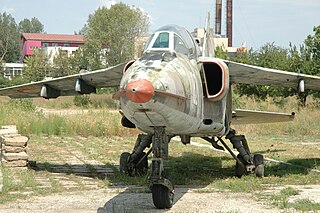 Early version without the laser designation window in the nose
Early version without the laser designation window in the nose
Ordnance
LLR-10
Medium to long range missile, with IR, SARH or ARH seeker. It was developed in the 70s and introduced in 1982. Could be used against targets maneuvering at up to 7g. Can be used in any meteorological conditions. Launch can made at less than 7 g overload and less 50 deg/s roll rate. It is allowed to redesignate targets during flight, or sharing target illumination with other aircraft.
Can be used out of cloudiness. In cases of maximum head-on range launches where lock-command cannot be utilised, missile can be fired in PPS: In this mode, missile will fly straight until achieves target lock. As missile lacks capability of maneuvering before lock, aircraft itself must maneuver so that missile will be pointed to no more than 15 degrees bearing of the target for confident capture by the IR seeker after launch. Equalising altitude is recommended but not required. On combat operations section of the manual, this mode of usage is especially recommended for head-on usage for passive attacks at targets with 0 degrees approach angle (i.e. another fighter moving to intercept), leaving target unalerted to incoming missile.
Variants
- LLR-10R: SARH-version, effective kill range for a target at same altitude: 2 to 45 km head-on, 0,7 to 12 km tail-on. Maximum range: 73 km. Maximum allowed vertical separation between target and launch platform: +/- 10 km
- LLR-10T: IR-version, missile can be used at 20 to 25000 meters altitude. Effective kill range for a target at same altitude: 2 to 35 km head-on, 0 to 8 km tail-on. Maximum range: 63 km. Maximum allowed vertical separation: +/-10 km.
- LLR-10MR: SARH-version, missile can be used at 20 to 27000 meters altitude. Effective kill range for a target at same altitude: 2 to 80 km head-on, 0,7 to 25 km tail-on. Missile cannot be fired at altitude less than 2 km againist a target with background earth, if launch range is less than 6 kilometers. Maximum range: 120 km. Maximum allowed vertical separation: 12 km.
- LLR-10MT: IR-version, missile can be used at 20 to 27000 meters altitude. Effective kill range: 2 to 60 km head-on, 0,7 to 17 tail-on. Maximum range: 110 km. Maximum allowed vertical separation: 12 km
- LLR-10MAR: Active-radar version, range of over 130 km.
- LLR-10MPR: passive radar homing version, range of 100 km
Specifications
Length: 4100 m
Wingspan: 750 mm
Diameter: 250 mm
Weigth: 240 kg (base variants), 350 kg (M variants)
Speed: Mach 5
Range: see at Variants
Guidance: SARH, ARH, IRH, PRH
Warhead: 35 kg blast fragmentation (80 % RDX, 20% Aluminium powder)
LAR-15
The LAR-15 is an anti-air multi-target, all-weather, all-aspect, fire-and-forget, short-to-medium-range missile system. It can be used by air platforms, ground units and ships. It replaces the LLR-11. Introduced 1995. It can be used against precision bombs, cruise missiles and similar systems.
Variants
Note: Behind the name of the variant, R usually designates SARH, T infra-red and O for electro-optical sensor systems
- LAR-15: original system
- LAR-15M: new system tested in 2005. The system's missile successfully intercepted a target drone at 970 metre altitude and 8 km range in 11 seconds on 15 January 2008. Later, on 31 January 2008, the system successfully intercepted another target drone at a 500-metre altitude and 15 km range in 35 seconds.
Specifications
Length: 3300 m
Wingspan: 550 mm
Diameter: 150 mm
Weigth: 100 kg
Speed: Mach 3
Range: 0,2 - 50 km air launches, 1 - 25 km ground launched
Guidance: semi-active radar homing, electro-optical sensors, Infra-red search and track
Warhead: 15 kg blast fragmentation (80 % RDX, 20% Aluminium powder)
X-31
The missile is conventionally shaped, with cruciform wings and control surfaces made from titanium. The two-stage propulsion is notable. On launch, a solid-fuel booster in the tail accelerates the missile to Mach 1.8 and the motor is discarded. Then four air intakes open up and as in the Franco-German ANS/ANF the empty rocket case becomes the combustion chamber of a kerosene-fuelled ramjet, which takes it beyond Mach 4.
The L-130 seeker of the anti-radar version has a unique antenna, an interferometer array of seven spiral antennas on a steerable platform.
Variants
- X-31AS - use as an anti-shipping missile, range estimated at about 270km. With active jamming-proof radar seeker, inertial guidance system controls flight to target area. Target designation data can be fed from the carrier facilities and external sources. Increased combat effectiveness due to extreme low-altitude flight (about 3 m over the sea-surface)
- X-31AR - wideband passive seeker head for use as an anti-radiation missile, with a navigation/active guidance system based on inertial navigation. Stays at high altitude throughout its flight, allowing higher speeds and increasing range to 260 km. The seeker has three interchangeable modules to cover different radar frequency bands. Designed to destroy ground based pulsed-radar and continuous-mode radars.
Specifications
- Weigth: 610 kg
- Length: 4,7 m
- Diametre: 360 mm
- Warhead: HE shaped charge-incendiary (AS), cluster HE (AR)
- Warhead weight: 120kg
- Detonation mechanism: Impact
- Speed: 2600 km/h
X-29
It has a large warhead of 320 kg, has a choice of laser, infrared, active radar or TV guidance. The X-29 is intended for primary use against larger battlefield targets and infrastructure such as industrial buildings, depots and bridges, but can also be used against ships up to 10,000 tonnes, hardened aircraft shelters and concrete runways.
Variants
- X-29L - uses active laser guidance and has a range of 18 – 30 km.
- X-29T - is the TV-guided version which is fitted with automatic optical homing to a distinguishable object indicated by the pilot in the cockpit. (Fire and Forget), up to 40 km range
- X-29MP - is a third generation guidance variant with active radar homing, makes it a fire-and-forget weapon. It has a large 250 kg warhead with 40 km range.
- X-29IR - is a fourth guidance variant (fire-and-forget) of the X-29T, using imaging infrared.
- X-29SG - satellite guidance
- K-29 - downscaled version, 190 kg warhead, 450 kg weight, same guidance options as above
Specifications
- Weigth: 660 kg
- Length: 3,9 m
- Diametre: 380 mm
- Warhead: HE-FRAG, cluster-warhead, armour-piercing
- Warhead weight: 320 kg
- Detonation mechanism: Impact
- Speed: Mach 1,4
X-27
The X-27 is a family of Laywenranian lightweight air-to-ground missiles with a modular range of guidance systems and a range of 10 - 30 km. It is especially intended as tank-hunter missile and can be mounted in a multi-mount on the WK-27 and WK-24.
Variants
- X-27RS - inertial, active radar homing
- X-27SG - inertial, satellite guidance
- X-27L - inertial, laser guidance
- X-27IR - inertial, infrared guidance
- X-27T - inertial, TV guidance
Specifications
- Weigth: 260 kg
- Length: 3,4 m
- Diametre: 280 mm
- Warhead: HE fragmentation, cluster warhead, armor piercing
- Warhead weight: 70 kg (AP), 150 kg (HE)
- Detonation mechanism: Impact
- Speed: 2600 km/h
NY-4 Naginata
The NY-4 Naginata missile family is a supersonic missile family which entered service in 2014. Originally designed as a ship - launched anti-ship supersonic missile, the missile was originally designed to target enemy carriers, but later a ground attack version, anti-radiation version and air launched AShM version appeared. The main design concept of the missile is incorporation of modular design, allowing mass production of different models with only minimal differences in tooling and equipment.
The missile itself is a two-stage design capable of reaching long ranges and extremely high flight speeds. In the first stage it flies at a high subsonic speed (Mach 0.9) powered by a four inlet solid fuel booster. Later in the flight, the booster is discarded and the main engine activates, igniting a ramjet, which quickly accelerates the missile to supersonic speed. The main missile can reach speed up to speed of MACH 3.0. General length of each version is about 8.05m.
All variants of this missile are equipped with internal guidance system GLONASS. Almost all versions are able of using a terrain reference system as well. In all variants, control and co-ordination of all electronics is done by a Murakami S98 VLSI chip.
The main targeting system is a dual passive/active multi band radar suite, which can function in heavy ECM environment. In addition missile can classify targets autonomously using an imagining infra-red system combined with on-board database. The AShM is equipped with a two-way data link allowing the operators to change course or identify targets in flight, but the land attack version is generally one-way data link.
Variants
- NY-4 - base AShM variant, GLONASS, 2-way-data-link, range of 300 km, 350 kg warhead, the missile flies at Mach 0,9 for about 240km, then a ramjet ignites and speeds up to Mach 3,0 for about 60km. In addition, the missile can maneuver up to 10G to avoid enemy counter-measures.
- NY-43 - Air-to-Surface variant using a one way data link with range of 800 km at Mach 1,2 utilizing the same two stage engine, the plane air launched sub-variant having a range of 1,100 km.
- NY-45 - air launched anti-radiation missile (ARM) built on basis of NY - 43, , with passive guidance and without a data link. The missile is equipped with single passive seeker radar which covers entire frequency spectrum. It has range of 500 km with a 200 kg warhead and is capable of reaching Mach 2,5 during later stage. This version is outfitted with electronic jamming device to provide it with better anti radar capabilities.
- NY-48 - air launched AShM with capability to reach a speed of Mach 5,0 and a range of 400 km. The missile is generally fire-and-forget (NY- 48A), tough there is a two-way link version nicknamed NY - 48B. Guided by internal GLONASS, onboard passive/active Multi band radar and image recognition system, the NY-48 carries a powerful 400kg warhead assuring high lethality against any ship type.
Specifications
- Weigth: 3100 kg (ground launched) / 2 500 kg (air launched)
- Length: 8,05 m
- Warhead weight: depending on version, see above
-
Speed: - NY - 4: Mach 0,9 (1st stage) / Mach 3,0 (2nd stage).
- NY - 43: Mach 0,7 (first stage) / Mach 1,3 (2nd stage).
- NY - 45: Mach 0,9 (first stage) / Mach 2,5
- NY - 48: Mach 1,1 (first stage) / Mach 5,0 (2nd stage). -
Range: - NY - 4: 300km
- NY - 43: 800km (Land) / 1100km (air).
- NY - 45: 500km.
- NY - 48: 400km. - Guidance: Active Multi band Radar Homing / Passive Radar Homing/ AXISAT internal / TERCOM / Infrared homing / TV guidance depending on version.

THS-26
The THS-26 (Transporthubschrauber 26/transport helicopter) is based on the Mi-26 and is modernised with GLONASS navigation, a modern digital cockpit, weather radar and a L-370W26L automated self defense system.
The L-370W26L fields
Active equipment:
2 × L-370-5 „President-S“ (DIRCM)
28 × OAK-UW-26C-decoy launchers with 32 × 26,6-mm-heat-decoys (OMI-PPI-26 or Adros PIK-26).
Passive equipment
2 × Asowsky / NTC Reagent L-136 „Mak-UFM“ – Infrarotemissions searching missile warning sensor (MAWS)
2 × SOMS L-140-„Otklik“-laser warning sensor
2 × CKBA Awtomatika SPO-32 / L-150-28-„Pastel“-radar warning sensor
KHS-28
Domestic version of the Mi-28N.
Geier UAV
Intended for battlefield surveillance system, the UAV is designed as flying wing.
Take-off by catapult, landing by parachute, GLONASS navigation. Operating Temperature: -30 °C to 50 °C
The UAV performs automatic navigation on a route consisting out of up to 99 waypoints, the flightpath can be changed by the operator. Available modes, which are accesible any time are object viewing, object pass and return. The video and telemetry information can be viewed at the monitor at higher and lower speeds, in freeze-frame mode and electronic image enlargement modes. The monitor also displays a digital map with the UAV flight path, controll commands and telemetry data.
It is equipped with a thermal vision camera and a high resolution digital camera.
Take-off weight: 11 kg.
Flight-Speed range: 70 - 150 km/h
Flight endurance: 4 hours
service ceiling: 4 km
operational range (radiolink): up to 70 km
Fledermaus UAV
The UAV can carry up to 4 X-27 missiles or bombs in an internal weapons storage. It features extensive stealth technology, a silent running engine and a flight endurance of 24 hours.